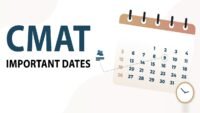
The Common Entrance Examination for Design (CEED) is a national-level entrance test for postgraduate and Ph.D. programmes in the fields of industrial design and technology. It is conducted annually by IIT Bombay.
CEED 2023 is an aptitude test to assess a candidate’s skills in the field of design and so no specific set of textbooks is advised. The CEED website only provides a list of subjects with the names of the topics. As a result, it is recommended that students go over the full syllabus before applying for the exam. The revised CEED syllabus 2023 was released on September 1, 2021, in two parts – Part A and Part B.
Table of Contents
CEED Syllabus 2023
According to the CEED website, Part A of the CEED syllabus 2023 comprises the following subjects and topics:
| Subjects | Topics |
| Visualisation and Spatial Ability | Questions employing pictures and diagrams to assess understanding of transformation and/or manipulation of 2D and 3D shapes and objects, as well as their spatial relationships |
| Environmental and social awareness: |
|
| Analytical and logical reasoning |
|
| Language and creativity |
|
| Design thinking and problem-solving | Understanding of the context, users, and limitations to choose the best solution for a given design challenge |
| Observation and design sensitivity |
|
Part B of the CEED syllabus for 2023 comprises the following subjects and topics:
| Subjects | Topics |
| Drawing | Ability to draw products, people and scenes with good line quality, composition, proportion, perspective and shading |
| Creativity | Ability to think beyond the box and come up with unique solutions |
| Communication skills | Ability to clearly explain concepts and ideas using text and visuals |
| Problem identification skills | Ability to comprehend the user and the context |
Note: IIT Bombay holds the CEED test every year in the month of January. CEED 2023 was held on January 23, 2023.
The syllabus for CEED 2023 is very exhaustive and might not cover all the topics. In order to crack it, understanding the exam pattern, marking scheme and nature of the questions is very important. Given below is the exam pattern followed for CEED 2023.
CEED Exam Pattern 2023
The CEED exam is offered in an online format. Part A of the question paper contains three types of objective questions that should be answered on the computer: Numerical Answer Type (NAT), Multiple Choice Question (MCQ), and Multiple Select Question (MSQ). Part B, on the other hand, contains theoretical questions with responses to be written in the answer booklet provided, but the candidate needs to tick the appropriate box on the computer screen to indicate they have answered those questions.
| Part A | ||
| Section | Number of questions | Total marks |
| NAT | 8 | 24 |
| MSQ | 10 | 30 |
| MCQ | 23 | 46 |
| Total | 41 | 100 |
| Part B | ||
| Sketching | 1 | 20 |
| Creativity | 1 | 20 |
| Form Sensitivity | 1 | 20 |
| Visual Sensitivity | 1 | 20 |
| Problem Identification | 1 | 20 |
| Total | 5 | 100 |
Part A solely evaluates visual and spatial ability, environmental and social awareness, analytical and logical reasoning, language, observation, and design sensitivity of the candidates. Candidates are shortlisted based on their performance in Part A.
Part B contains subjective questions that do not have model answers, unlike the objective questions in Part A. Only those applicants who are shortlisted in Part A will have their Part B answer sheets manually reviewed.
Applicants who want to do well in the upcoming batch of CEED exams should practice their sketching, rendering, and visualisation skills, as well as solve the previous year’s question papers, which are available on the CEED website.




